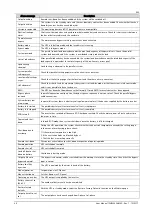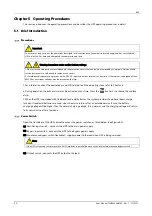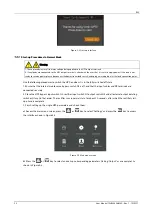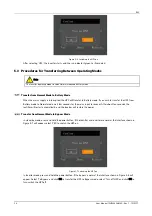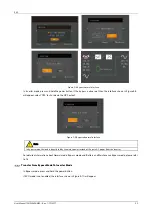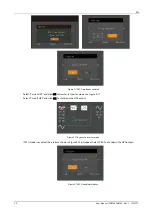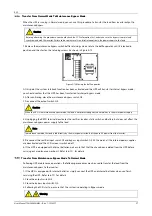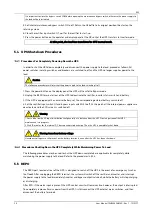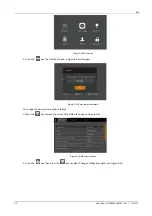
EXS
User Manual 10H52260UM60 - Rev. 1 - 10/2017
47
Alarm message
Description
Input neutral lost
The AC input mains N line has not been detected. Please check whether the input N line has been interrupted
or disconnected
Input ground lost
Check whether the PE line is connected securely, and that the alarm can be cleared on line
Input phase reversed
The mains AC input phase is reversed. Normally, phase B lags phase A by 120 degrees, and phase C lags phase
B by 120 degrees.
Check that the UPS mains input phase sequence is correct. If not, correct it
Input abnormal
The rectifier and charger have switched off because the mains voltage and frequency values exceed the
normal operating range. Check whether the rectifier input phase voltage and frequency exceed the normal
range or the mains power has been switched off
Rectifier overload
The output power exceeds the rectifier overload point. Check that the input voltage meets the output load
requirement, a mains input range 176V - 100V corresponds to a load range of 100% - 50%, with linear derating
Battery reversed
The battery positive and negative terminals have been inverted. Please reconnect the battery and check the
battery cable connections
Battery low pre-
warning
This alarm is generated when the battery reaches the EOD (End Of Discharge voltage). The battery will
continue to provide full load discharge capacity for another two minutes after this warning appears. The user
can set this value ranging from 2min
~
30min, (2 min by default). Please shut down the load as quickly as
possible
Battery voltage
abnormal
When the battery is connected, the system checks whether the battery voltage exceeds the normal setting
range. Check whether the battery terminal voltage exceeds the normal setting range
No battery
Check the battery and battery cable connections
Battery series not
qualified
The actual number of connected battery cells differs from the setting. Modify either the number of batteries
or the setting so that these two values are consistent
Battery aged
The battery capacity is less than 25% of the initial value. Battery replacement is recommended
Battery test fail
The battery low voltage is detected during the manual or periodic battery self-test. Battery replacement is
recommended
Battery overtemp
The battery ambient temperature is too high. Check whether the battery ambient temperature exceeds the
setting value of 40 - 60
Ԩ
(default: 50
Ԩ
)
Battery cabinet not
connected
The battery cabinet is not connected to the system
Fan fault
At least one fan is faulty. Check whether the fan is blocked or the cables have been disconnected
System overtemp
The internal heat sink temperature is too high, and the inverter has been switched off. This alarm may only be
cancelled by reducing the heat sink temperature of each module to within the setting range. The system will
restart automatically once the fault has been resolved.
In the event of overheating, please check:
1. If the ambient temperature is too high
2. If the ventilation holes are blocked by dust
3. That the fans are working correctly
Inverter overload
The inverter load demand is exceeds the rated value, the overload delay time has expired, and the inverter has
shut down. If the bypass is available, the UPS will transfer to bypass mode, otherwise the output to the load will
be interrupted Check that the current inverter load demand, if it is overloaded, simply reduce the load demand
and the system will revert to inverter mode five minutes after the alarm condition has been cleared
Bypass phase
reversed
The bypass voltage phase sequence is reversed. Normally, phase B lags phase A by 120 degrees, and phase C
lags phase B by 120 degrees.
Check that the UPS bypass input phase sequence is correct. If not, correct it
Bypass overcurrent
The bypass current exceeds the rated value. The overload delay time has expired and the inverter has shut
down
Parallel bypass cable
connection abnormal
The bypass phase number is different from the output phase number indicated on the 'Monitor’ page. Please
check that the bypass cable connection is the same as the configured phase number
Bypass abnormal
This may be caused by the bypass voltage and frequency being outside the acceptable range, the bypass
being switched off or by the bypass cables being connected incorrectly
1. Check that the bypass voltage and frequency are within the setting range.
2. Check the bypass cable connections
Bypass abnormal in
ECO mode
ECO mode is available, and the bypass voltage and frequency are outside the setting range. Check that the
bypass input voltage and frequency are within the setting range.
Output LPE short
There is a short circuit between the output and the enclosure Check for short circuits between the output
cables and the enclosure
















